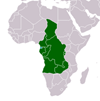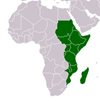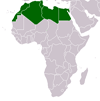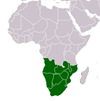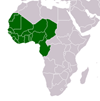Household seasonal food insecurity in Oromiya Zones Ethiopia: causes
Household seasonal food insecurity in Oromiya Zones Ethiopia: causes
The main objective of the study is to identify the environmental and socio-economic causes of transitory food insecurity among farm households in Oromiya Zone. The necessary data were generate from both primary sources. Household survey, key informant interview, focus group discussion and interpretations of topographic and thematic maps were the principal means of generating data from primary sources. The data analysis techniques involved household food balance model, descriptive statistics, multivariate regression, point score analysis, and GIS for mapping. The result of the measurement of per capita food availability indicate that over eighth-tenth of the household were facing seasonal food shortage in 1999. The variation across the study werdas has shown that households in Batti had faced greater food deficiency. The findings reveal that households headed by women, the young and the illiterate and those with large family size were found to be more vulnerable to seasonal food shortage. In contrast, farmers with fertile farmlands, those who owned a relatively large number of livestock, those who harvested a large amount of grain, those who obtained farm credit and those who utilize irrigation for crop cultivation were found to have better food availability and hence were less affected by food insecurity. The farmers studied perceived a multitude of environmental, demographic, economic, infrastructural and social factors causing seasonal food insecurity. They identified drought, erratic rainfall patterns, livestock and crop diseases, dependency on a single meher harvest per year and pests as the major environmental problems hindering them from being self-sufficient in food production. Among the demographic factors, rapid population growth and the resultant diminishing land holdings were felt to be the most important causes of food insecurity. The farmers also perceived poverty factors specifically, lack of investable surplus cash and shortage of draft power as the main bottlenecks against the expansion of agricultural production. The zone under consideration is one of the poorest with respect to the development of rural infrastructure. The absence of irrigation and the resultant dependency on rain for crop cultivation, and the lack of sufficient veterinary services are among the infrastructural obstacles about which the majority of the farmers complained. Health problems and poor savings were perceived to be the most important social factors adversely affecting household food security.
CITATION: Degefa Tolossa. Household seasonal food insecurity in Oromiya Zones Ethiopia: causes . Addis Ababa : OSSREA , 2002. - Available at: https://library.au.int/household-seasonal-food-insecurity-oromiya-zones-ethiopia-causes-3

